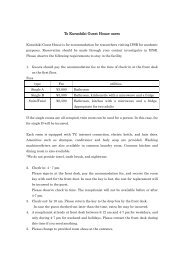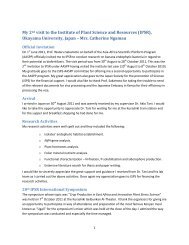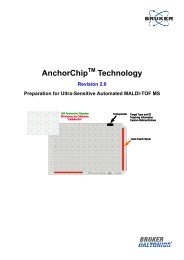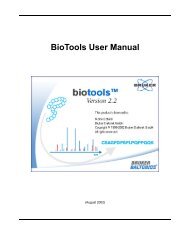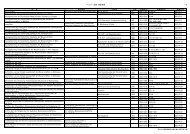Institute of Plant Science and Resources
Institute of Plant Science and Resources
Institute of Plant Science and Resources
You also want an ePaper? Increase the reach of your titles
YUMPU automatically turns print PDFs into web optimized ePapers that Google loves.
Applied Genomics Unit<br />
Group <strong>of</strong> Nuclear Genomics<br />
Pr<strong>of</strong>essor Minoru Murata<br />
Associate Pr<strong>of</strong>essor Kiyotaka Nagaki<br />
Research Associate Yutaka Ogura<br />
Nuclei which have very complex structures <strong>and</strong> various functions are the most<br />
important organelle in eukaryotic cells. Nuclear DNA is divided <strong>and</strong> packed into<br />
chromosomes, enabling accurate transmission <strong>of</strong> genetic information to daughter cells.<br />
Our research group is studying the molecular structures <strong>and</strong> functions <strong>of</strong> nuclei <strong>and</strong><br />
chromosomes, mainly in plants. Our most recent goal is development <strong>of</strong> artificial plant<br />
chromosomes by analyzing chromosome functional elements: centromeres, telomeres,<br />
<strong>and</strong> replication origins. We are also interested in chromatin structure <strong>and</strong> gene<br />
expression.<br />
A stable ring minichromosome in Arabidopsis<br />
thaliana<br />
Fluorescence in situ hybridization (FISH) probed<br />
BAC clones revealed that is a ring<br />
minichromosome originated from a short arm <strong>of</strong><br />
chromosome 2, with size <strong>of</strong> 3.7 Mb.<br />
Arabidopsis centromere-specific histone H3<br />
(HTR12) visualized by immunostaining<br />
Upper– metaphase chromosomes from a cultured<br />
cell; Lower– extended chromatin fibers from<br />
cultured cells. Red signals are from HTR12.<br />
Analysis <strong>of</strong> holocentric chromosomes in<br />
Luzula nivea<br />
In most eukaryotic species, only one centromere<br />
per chromosome is located at a primary<br />
constriction site. However, no primary<br />
constrictions are found in Luzula nivea<br />
chromosomes. Therefore, it is believed that an<br />
entire region <strong>of</strong> the chromosome acts as a<br />
centromere. The existence <strong>of</strong> such chromosomes,<br />
called “holocentric chromosomes”, has been<br />
known for 60 years, but their actual structures<br />
have not been observed. For this study, we<br />
isolated a cDNA encoding a centromeric histone<br />
H3 variant from L. nivea (LnCENH3) <strong>and</strong> raised<br />
an anti-LnCENH3 peptide antibody based on the<br />
deduced amino-acid sequence. Immunostaining<br />
with the antibody clearly revealed the linear<br />
shape <strong>of</strong> the centromeres at prophase to<br />
telophase. It also revealed the dramatic decrease<br />
<strong>of</strong> LnCENH3 at interphase.


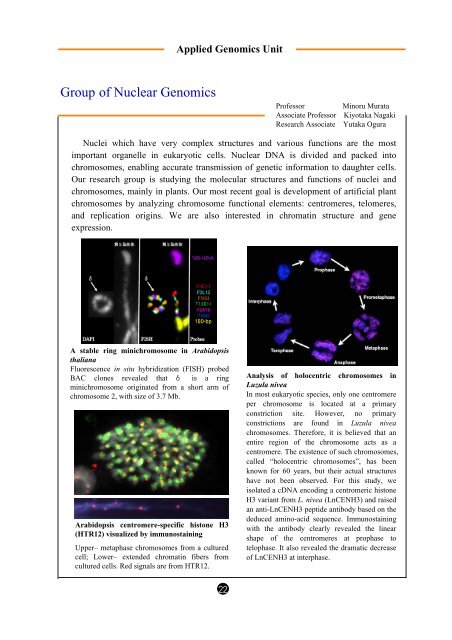
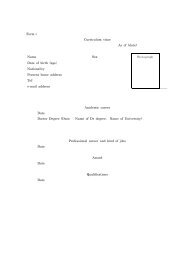
![[Application Forms to Tenure-track Assistant Professor] Applicants ...](https://img.yumpu.com/36047313/1/184x260/application-forms-to-tenure-track-assistant-professor-applicants-.jpg?quality=85)
